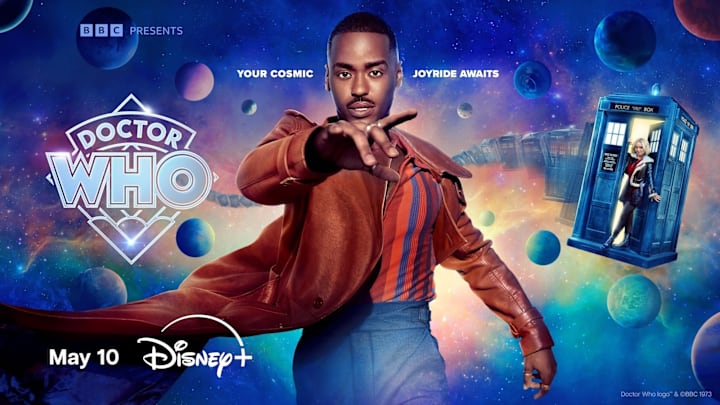To prove that he wasn’t one of the Chulders, The Doctor showed Rogue his previous faces in Doctor Who. This included the likes of William Hartnell, Christopher Eccleston, David Tennant (twice!), and Jodie Whittaker. There was one face included that hasn’t been seen as The Doctor in the TV series in all 60 years of it running, which brings up changes that have happened due to bi-generation.
It’s all about the inclusion of Richard E. Grant’s face. Now, Grant has been in the series. You’ll remember him from “The Snowmen,” for example. However, that shouldn’t have made him a face of The Doctor.
Instead, it’s all about making other elements of the world of Doctor Who canon to the TV series. This is the first time the series has done this, and it brings up questions about whether it will happen again in the future. What exactly have bi-generation and The Toymaker done to the world of The Doctor?
When was Richard E. Grant a face of The Doctor?
We can head over to the animated Doctor Who series released in 2003 to mark the 40th anniversary of the show. Grant voiced the Shalka Doctor, who has been non-canon up to this point. The animated episode is called Scream of the Shalka if you want to find it and watch it.
When the animated episode was created, it was viewed as being canon. Grant was considered Nine in the timeline, and then just a couple of years later, the entire series was brought back. Christopher Eccleston took on the role of The Doctor, and officially became Nine. That made the animated episode non-canon.
Russell T. Davis has confirmed that Grant’s inclusion in the circle of faces is to make the Shalka Doctor canon for this new part of the story.
What does Grant’s inclusion mean for Doctor Who?
This suggests that a lot has changed. We already knew that bi-generation meant a few other changes here and there. It opens the door for more faces of the past to return without creating timeline issues, or having to find other intricate ways to do it.
However, it also opens the door for previous non-canon Doctors to come into the show. It means everything that we think and know about the canon of Doctor Who is wrong. Now, anything is possible, and it’s all thanks to the Toymaker and bi-generation. We’ll be on the look out for more faces of Doctors past who weren’t previously considered canon.
